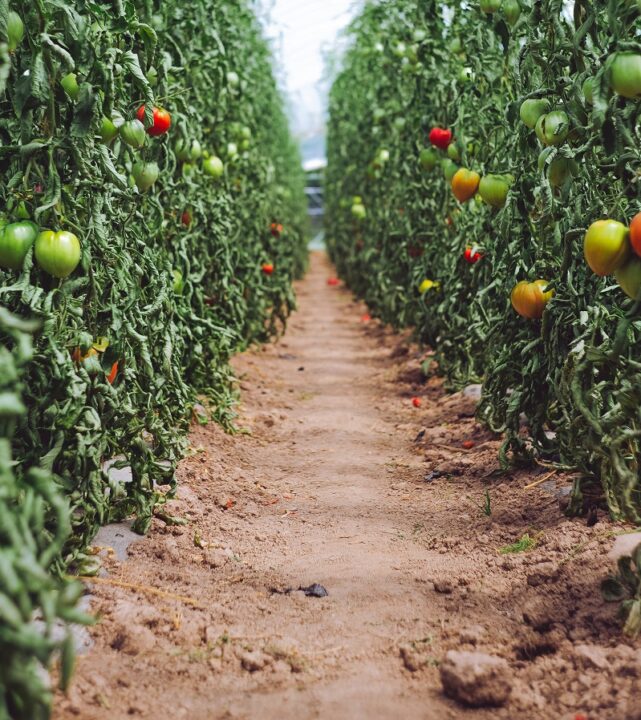Future Looks Sunnier for Growing Food Crops Under Solar Panels
Solar energy is becoming an increasingly profitable use for cropland, which has led to concerns that solar farms will displace food production. One possible solution that combines the two is agrivoltaics – the co-locating of agriculture and solar photovoltaic panels – which can maintain crop production, produce renewable energy, lower water use, and increase farm profitability.
A new $10 million grant from USDA’s National Institute of Food and Agriculture will allow researchers to study how to best optimize design for agrivoltaic systems in a variety of land types and climate scenarios.
The lead institute on the four-year project, titled “Sustainably Colocating Agricultural and Photovoltaic Electricity Systems,” or SCAPES, is the University of Illinois Urbana-Champaign. Partner institutes include the University of Arizona, Colorado State University, Auburn University, the University of Chicago, and the National Renewable Energy Laboratory. The project is funded through the Agriculture and Food Research Institute Sustainable Agriculture Systems program. The University of Arizona will receive $1.725 million of the grant funding.
University of Arizona Professor Gregg Barron-Gafford will be the physical science lead on the project. He led the first field-data assessment of agrivoltaics in the U.S. and found that agrivoltaics increases the efficiency of both the solar panels and crop production. Water released by plants cools the solar panels, which increases their efficiency and electrical output. Shade from the panels increases plant productivity and saves water, which is especially important as climate change increases the number of areas susceptible to extreme heat and drought, he says.
The SCAPES project will use a new 1.5-acre Agrivoltaics Learning Lab at the University of Arizona as one of its three agrivoltaics research sites – with the others in Illinois and Colorado – to assess microclimatic and plant responses to the presence of solar panels. The measurement arrays will follow protocols developed by Barron-Gafford.
“This USDA program is the first time we’re going to have really large installations,” Barron-Gafford says. “We constantly get asked ‘Do all these benefits you’re seeing still happen when you scale this up or look at other forms of agriculture?’ That’s really what this project is doing: Looking at the opportunities and barriers that come with that scale.”
With this grant, Barron-Gafford continues, “we’ll be able to measure a lot more food crops at once. And we’ll be able to do a lot more manipulations, like see just how much we can dial back our water use and still meet food needs.”
The project will provide a comprehensive analysis of the transformative potential of agrivoltaics, adds Madhu Khanna, principal investigator of the grant and interim Director of University of Illinois Urbana-Champaign Institute for Sustainability, Energy, and Environment. “Our goal is to maintain or even increase crop yield, increase the combined – food and electricity – productivity of land, and diversify and increase farmers’ profits with row crops and forage and specialty crops across a range of environments.”









